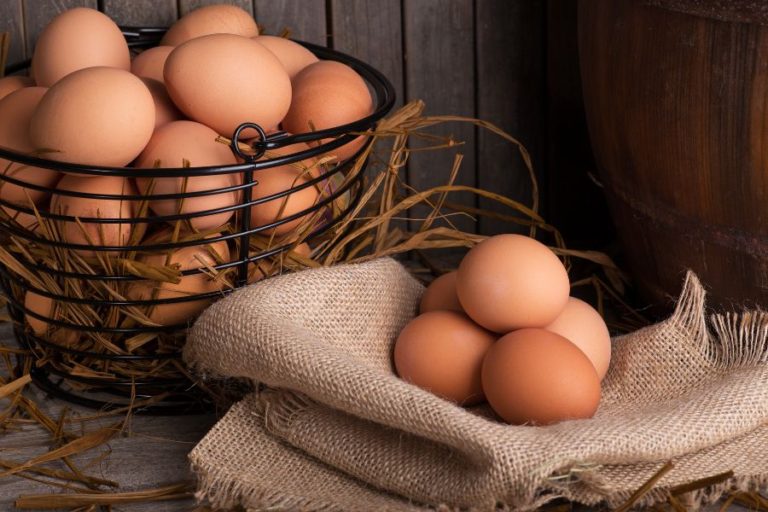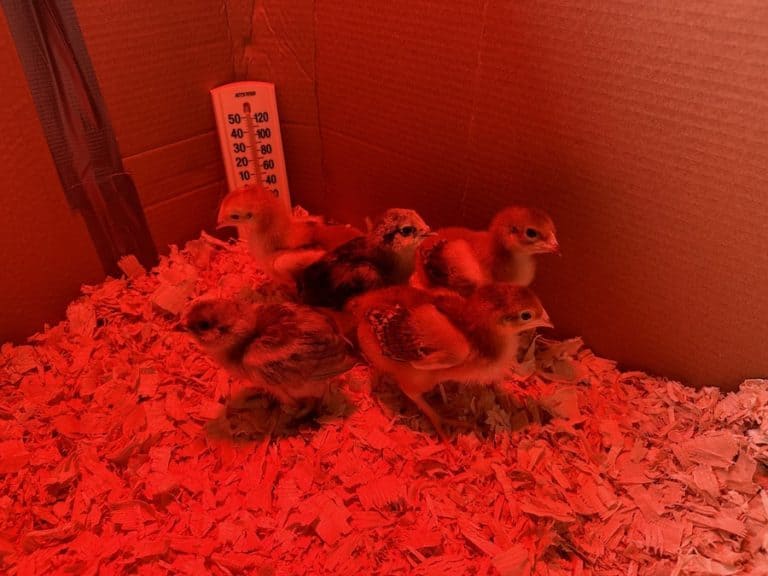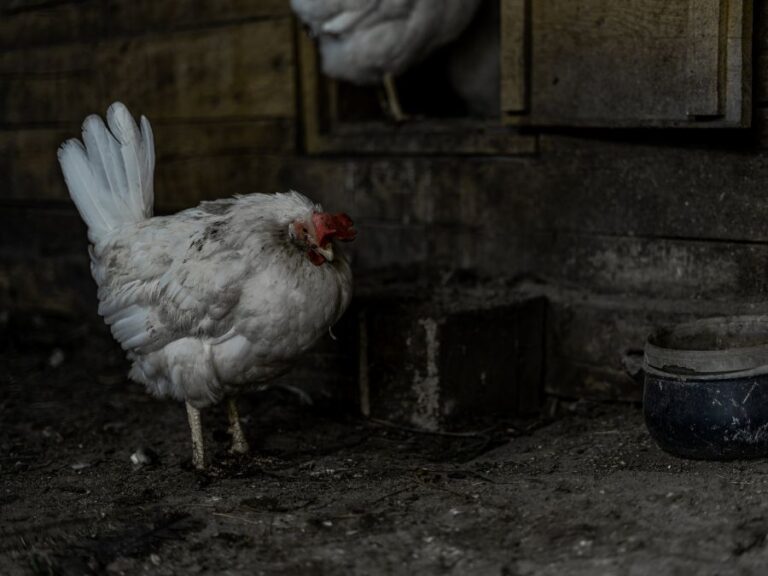Best Bedding For Chicken Coops

When it comes to raising happy and healthy chickens, providing the best bedding for chicken coops is quite important. The right bedding not only ensures your flock’s comfort but also plays a vital role in maintaining a clean and safe environment.
When choosing bedding for your chicken coop, you’ll want something that is absorbent, easy to clean and works well in different temperatures and climates. In this article, we will explore various options for chicken coop bedding, discussing the pros and cons of each to help you make an informed decision and let you know what we found to be the best option in our coop.
Disclaimer: This article includes affiliate links. If you click one of them, we may receive a small percentage of the sale at no extra cost to you. Thank you for your support!
1. Straw Bedding

Straw bedding is a popular choice for chicken coops due to its insulation properties, absorbency, affordability, and the comfort it provides to chickens. However, it does require regular maintenance and proper management to ensure a clean and healthy coop environment.
Straw bedding can be a great option for your chicken coop. Here are some reasons why it might be a good fit for you:
- Insulation: Straw provides excellent insulation, making it an ideal choice for chicken coops, especially in colder climates. It helps keep the coop warmer during winter months, providing a cozy environment for the chickens. This insulation is crucial for maintaining a stable temperature and protecting your flock from cold weather-related stress.
- Absorbent: Straw is highly absorbent and can soak up moisture effectively. This quality is essential for keeping the coop relatively dry and preventing the buildup of wet, soiled bedding. Moist bedding can create an unhealthy environment and increase the risk of bacterial growth, so the absorbency of straw is a significant advantage.
- Readily Available: Straw is widely available at feed stores, making it accessible to most poultry keepers. Its availability and affordability make it a convenient option for those looking for an economical bedding solution.
- Comfort: Chickens enjoy scratching and foraging in straw, which provides mental and physical stimulation for them. It allows them to engage in natural behaviours, such as dust bathing (which they love!)
However, it’s important to note that straw bedding also has its downsides. One significant drawback is that it can be labour-intensive because it needs frequent replacement. As chickens create waste and the straw becomes soiled, you’ll need to regularly remove the soiled straw and add fresh bedding to maintain cleanliness.
Additionally, straw can generate dust, mould, fungi and other bacteria, which may lead to respiratory issues for both chickens and humans if not managed properly. Lastly, straw can attract mites and other pests if the coop isn’t kept clean and well-ventilated.
Pros & cons of straw bedding
2. Pine Shavings
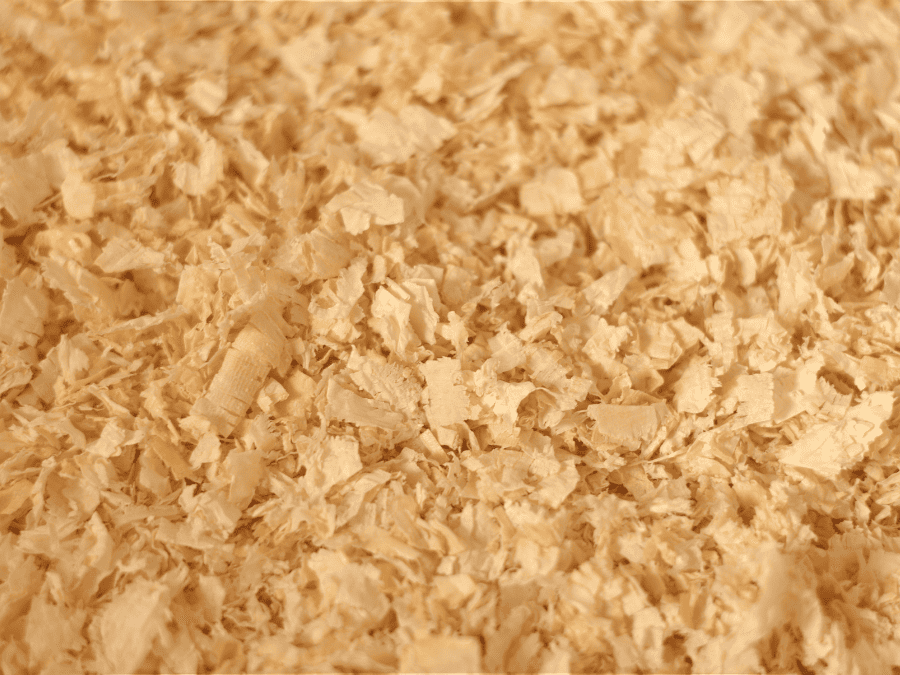
Pine shavings are another popular option for chicken coop bedding. They are a great choice due to their low dust production, natural insect-repellent qualities, absorbency, comfort, and accessibility. Pine shavings provide a comfortable and clean environment for your chickens while helping to maintain good air quality in the coop.
We use them ourselves, as they are easy to find where we live and are ideal for deep littering. This is essential to keep our coop warm during the cold Canadian winters. It is important not to mistake pine shavings for cedar shavings, which are extremely toxic to chickens and should not be used in the coop.
Pine shavings could be a suitable option for your chicken coop, and here is why:
- Low Dust: One of the significant advantages of using pine shavings is that they produce less dust compared to other bedding materials like straw. This low dust production helps maintain better air quality in the chicken coop. As mentioned above, reducing dust is especially important as excessive amounts can lead to respiratory issues in both chickens and their human caretakers.
- Natural Insect Repellent: Pine shavings have a natural, pleasant aroma, which acts as a mild insect repellent. The scent can help deter certain pests, like mites and lice, from infesting the coop and bothering your chickens.
- Absorbent: Pine shavings are known for their absorbent properties. They can effectively soak up moisture, helping to keep the coop dry and reducing the risk of bacterial growth. Maintaining a dry environment is necessary for the health and comfort of your chickens.
- Comfort: The soft and fluffy nature of pine shavings provides a comfortable surface for your chickens to walk, scratch, and nest on. It also mimics their natural habitat more closely than some other bedding materials. Plus, they have fun digging through it to look for treats.
- Readily Available: Pine shavings are widely available in most areas, making them easily accessible for chicken owners. This availability and affordability make them a convenient option.
- Deep Litter: Pine shavings are a great option for deep littering in the winter months. This is when you let the litter and droppings build up over the winter while periodically mixing the bedding and adding in new shavings. This method helps to generate heat by composting the shavings and droppings and naturally insulates the coop. To learn more about this method, check out our article “Deep Litter Method For Chicken Coops”
It is important to note that while straw bedding does have numerous benefits, it does have some drawbacks. For starters, it is more costly than straw and some other bedding options on the market. This makes it not as cost accessible to everyone. Our local supply has run out a few times due to the high demand, leaving us going weeks without shavings and having to switch to straw temporarily. Now, we have started to buy numerous bags at a time, which might not be an option for everyone.
Pros & cons of pine shavings
3. Sand Bedding

Sand bedding is an increasingly popular choice for a chicken coop due to its low maintenance, ability to create a consistently dry environment, longevity, odour control, insect-repellent properties, and ease of cleaning. It may require an initial investment and proper drainage setup, but it can offer long-term benefits in terms of coop cleanliness and efficiency.
Sand bedding could be a great option for your chicken coop, and here is why:
- Low Maintenance: Sand is a low-maintenance bedding option for chicken coops. Unlike traditional bedding materials like straw or wood shavings, which require regular replacement and cleaning, sand can be less demanding. It mainly involves raking and sifting to remove waste, a process that’s less labour-intensive than frequent complete bedding changes.
- Dry Environment: Sand provides excellent drainage, which helps maintain a consistently dry environment in the coop. Proper drainage prevents the accumulation of moisture, which is essential in reducing the risk of bacterial growth and the associated health issues that wet conditions can bring.
- Longevity: When managed correctly, sand bedding can last a long time. This can make it a cost-effective option in the long run, as you won’t need to purchase new bedding material as often as with some other choices.
- Reduced Odors: Sand helps control odours in the coop by promoting a dry environment and allowing waste to be easily removed. The dryness minimizes the development of unpleasant odours associated with moist bedding materials and droppings.
- Insect Control: Sand is not as attractive to common coop pests like mites, as there is less organic material for them to thrive on. This can help keep your coop free of infestations.
- Ease of Cleaning: Waste management in a sand-based coop is straightforward. You can use a rake to remove droppings and other waste, and the sand can be sifted to separate the waste from the clean bedding.
Although sand bedding has many benefits, there are also a few drawbacks to consider. One of the most significant disadvantages associated with sand bedding is the high cost and installation process. The expenses involved in buying enough sand for the coop and installing an efficient drainage system to prevent water from pooling can be significant when first getting started. However, these costs may be offset by the long-term benefits of not needing to replace the bedding as often. Additionally, sand weighs more than most other bedding, which means the floor has to be strong enough to adequately support the weight of the sand. This may mean making some changes to your current coop setup.
Pros & cons of sand bedding
4. Hemp Bedding
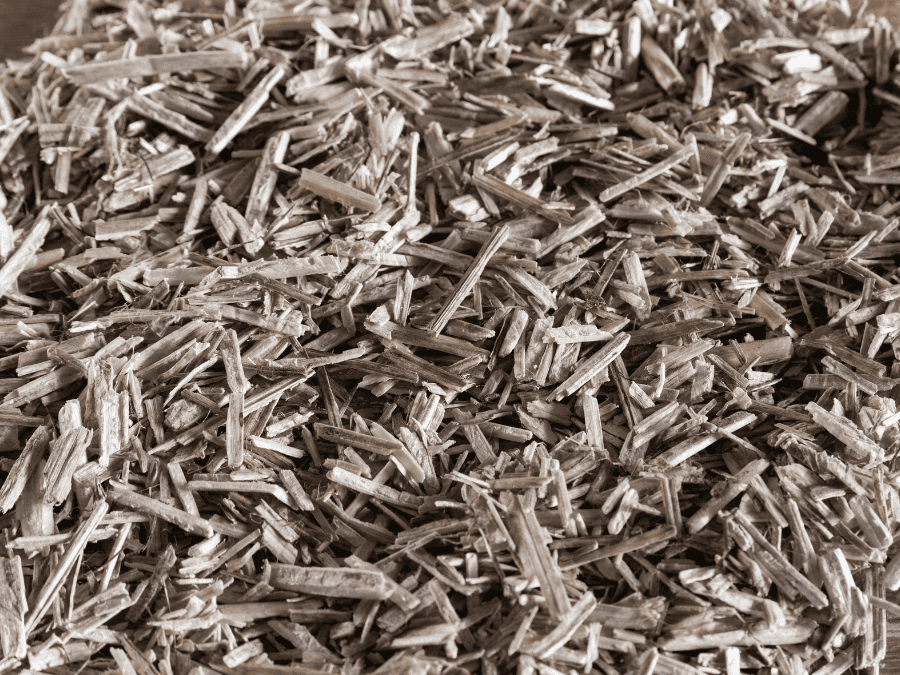
Hemp bedding is a relatively newer option for chicken coop bedding and is gaining popularity as it is a valuable and sustainable choice for chicken coop bedding. It offers several advantages for chicken coops, including high absorbency, low dust, longevity, natural pest resistance, and eco-friendliness. However, it may be less readily available and more expensive than some other options. Additionally, proper coop preparation and regular maintenance are necessary to make the most of its benefits.
Hemp bedding could be the perfect eco-friendly option for your coop, and here is why:
- High Absorbency: Hemp bedding is exceptionally absorbent, similar to pine shavings. It can effectively soak up moisture, keeping the coop dry and reducing the risk of bacterial growth. This is essential for the health and comfort of your chickens.
- Low Dust: Hemp bedding produces very little dust, which is beneficial for air quality in the coop. Low dust levels help prevent respiratory issues in both chickens and humans.
- Long-Lasting: Hemp bedding can last longer than some other bedding options, reducing the frequency of replacement. This can result in cost savings over time.
- Natural Pest Resistance: Hemp has natural pest-resistant properties. The smell of hemp can act as a mild repellent against common coop pests like mites and lice, helping to keep your flock healthier.
- Environmentally Friendly: Hemp is a sustainable and eco-friendly option as it’s biodegradable and grown without the need for harmful chemicals or pesticides. This makes it an environmentally responsible choice for chicken coop bedding.
Although hemp bedding is a highly eco-friendly choice for your chicken coop, it does come with some disadvantages. As it is a newer option, it may not be as easily available compared to more traditional options. Depending on your location, instead of picking up your bedding at a local shop, you might have to opt for more expensive alternatives to order the bedding. We would love to see hemp bedding in local stores so more people could have access to an eco-friendly bedding option.
Lastly, similar to sand bedding, hemp bedding is generally heavier than straw and pine shavings, which means you may need to adjust or change the floor of your chicken coop to adequately handle the added weight.
Pros & cons of Hemp bedding
Final Verdict
Choosing the best bedding for your chicken coop ultimately depends on your specific needs and preferences. While straw, pine shavings, and sand are all viable choices, hemp bedding can be an excellent long-term solution for those willing to put in the initial effort and who have access to it.
After experimenting with straw, sand, and pine shavings, we discovered that pine shavings are the best choice for our coop. They help in reducing moisture, engaging the chickens, doing the deep litter method, and insulating our coop during the winter. However, we still use straw for their outdoor run when available, as the chickens love to take dust baths and scratch around in it. If hemp bedding was easily accessible to us, I do think we would opt for that option and see if it was a good fit for our hens.
Ultimately, the best chicken coop bedding for you will depend on your resources, climate, and personal preferences. Remember to prioritize factors such as cleanliness, comfort, and safety for your chickens, and choose the bedding option that aligns best with those goals. Regular maintenance and proper management will ensure a healthy and happy flock in the long run.

